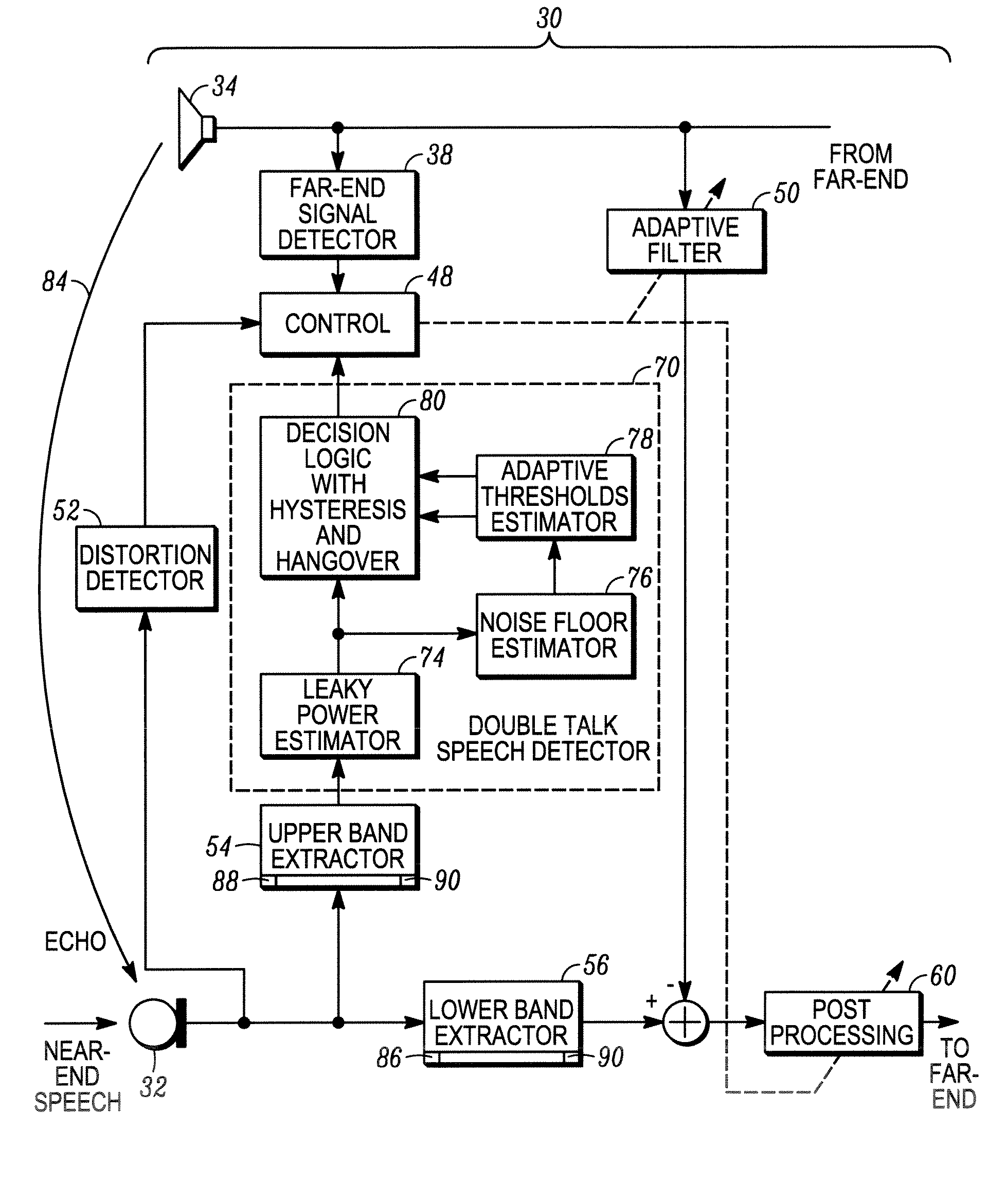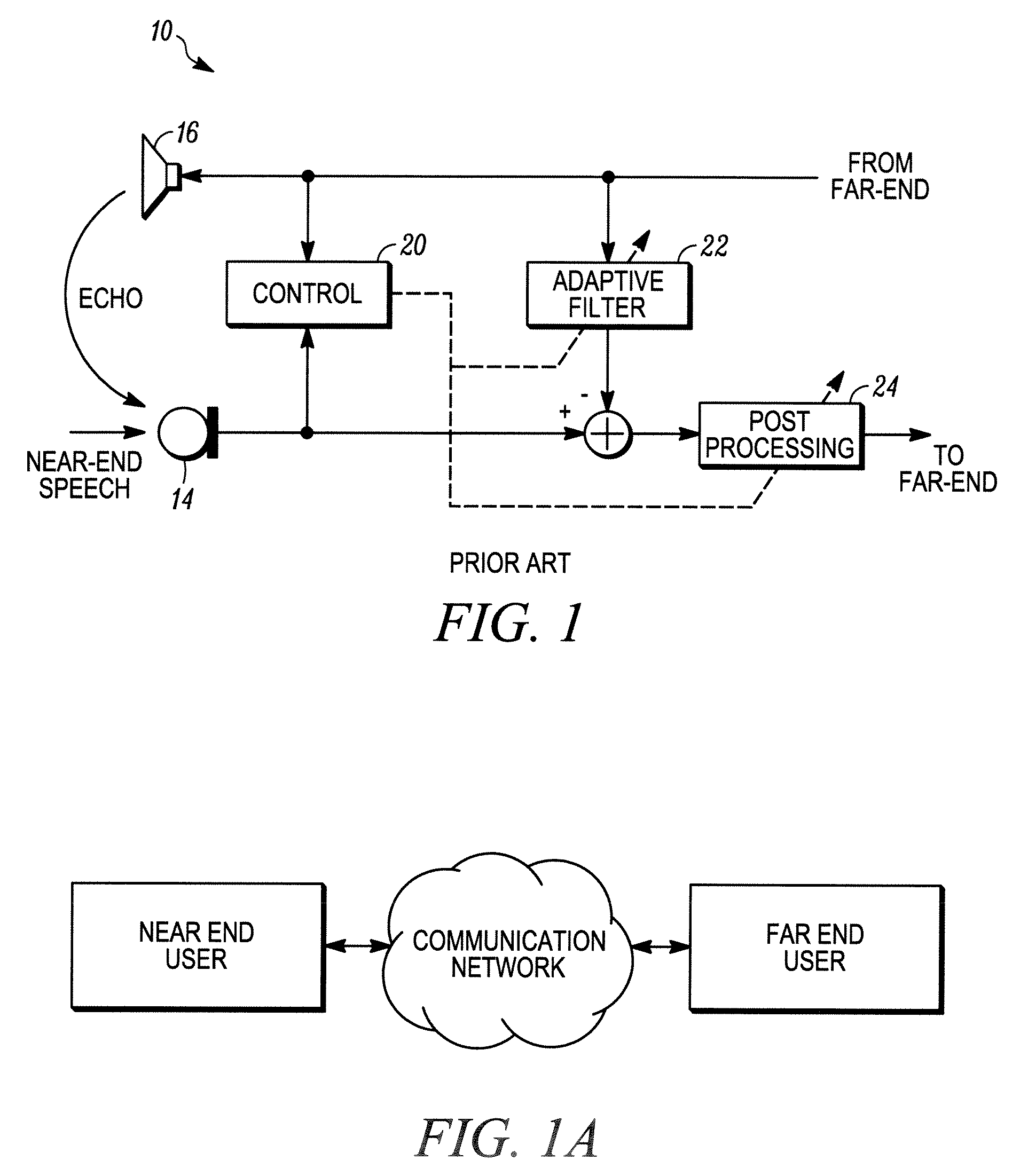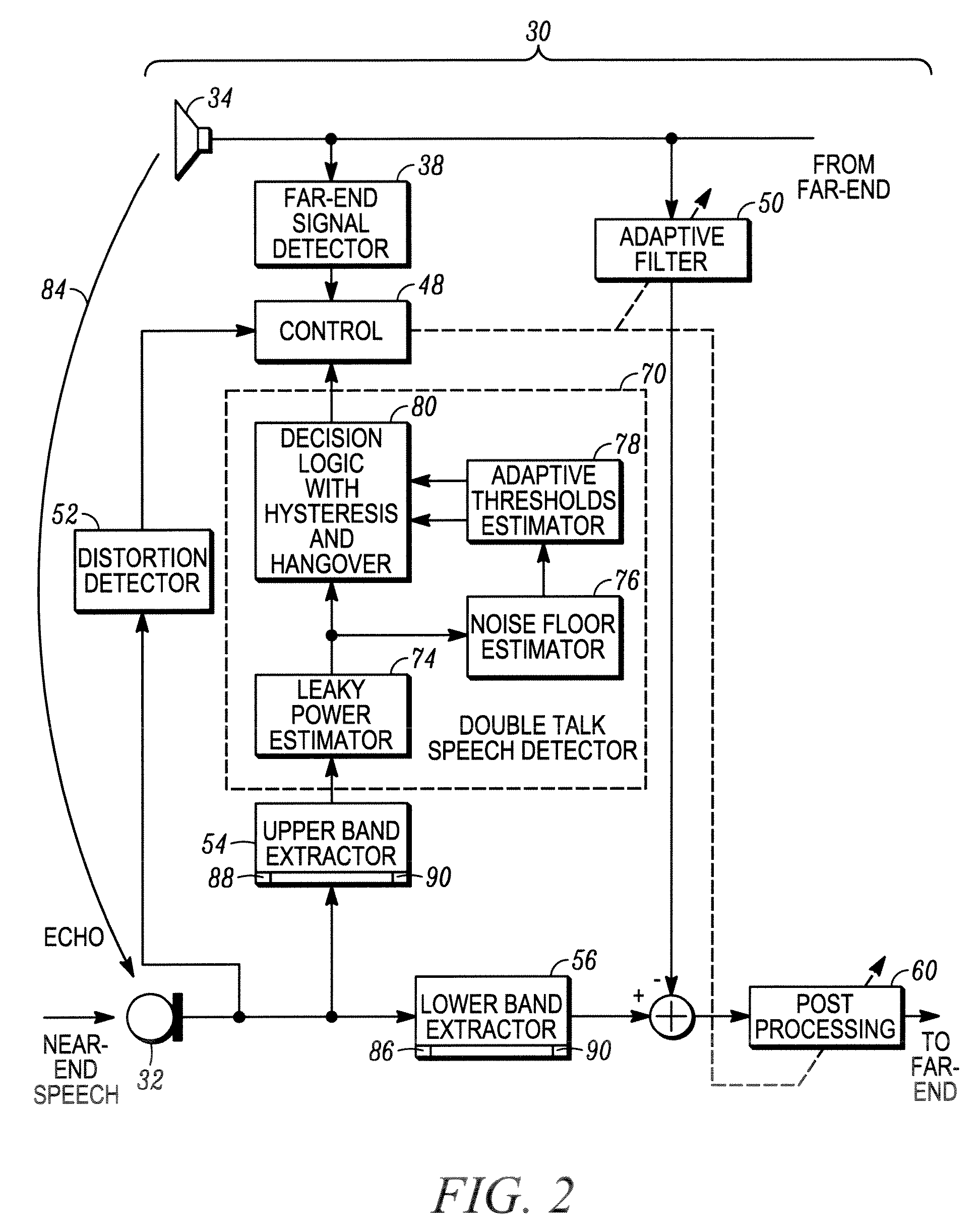Method and apparatus for double-talk detection in a hands-free communication system
a technology of hands-free communication and detection method, applied in the field of communication system, can solve the problems of significant coupling between speakers and microphones, inability to detect double-talk, and inability to operate normally,
- Summary
- Abstract
- Description
- Claims
- Application Information
AI Technical Summary
Benefits of technology
Problems solved by technology
Method used
Image
Examples
Embodiment Construction
[0021]In one embodiment, the present invention provides an echo canceling circuit having a double talk detector, an upper band signal filter configured to pass only near-end upper band signals to the double talk detector and remove lower band signals, an adaptive filter circuit, a control circuit operatively coupled to the double talk detector and to the adaptive filter circuit and an adaptive threshold estimator configured to iteratively calculate an upper adaptive decision threshold value and a lower adaptive decision threshold value. Using a hysteresis loop, the double talk detector declares near-end speech to be present if an estimated power level of the upper band signals exceeds the upper adaptive decision threshold value, and declares the near-end speech to be absent if the estimated power level of the upper band signals falls below the lower adaptive decision threshold value for a predetermined number of iterative cycles.
[0022]The present invention further comprises a method...
PUM
 Login to View More
Login to View More Abstract
Description
Claims
Application Information
 Login to View More
Login to View More - R&D
- Intellectual Property
- Life Sciences
- Materials
- Tech Scout
- Unparalleled Data Quality
- Higher Quality Content
- 60% Fewer Hallucinations
Browse by: Latest US Patents, China's latest patents, Technical Efficacy Thesaurus, Application Domain, Technology Topic, Popular Technical Reports.
© 2025 PatSnap. All rights reserved.Legal|Privacy policy|Modern Slavery Act Transparency Statement|Sitemap|About US| Contact US: help@patsnap.com



